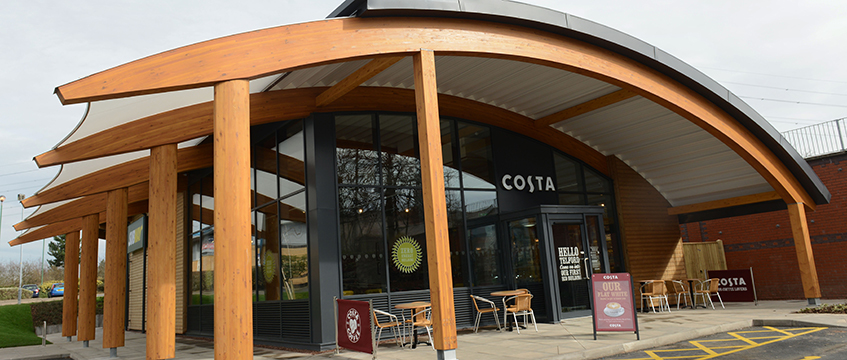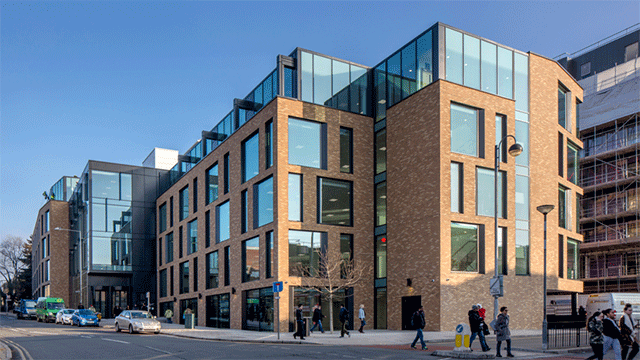Hammerson has become the first real estate company globally to launch a net positive strategy covering environmental and socio-economic impacts.
This will mean not only taking responsibility for its own portfolio but the actions of its tenants.
It aims to have a net positive impact across its portfolio by 2030. It joins a number of high-profile property companies in seeking to address its impact on its surroundings and ensure it is taking its corporate social responsibility seriously (see below).
Hammerson’s strategy has targets across four pillars where it has recorded it has the greatest material impact: carbon; resource use; water use and socioeconomic impact (see box). It will be implemented through its existing Positive Places sustainability scheme.
Hammerson head of sustainability Louise Ellison said: “Net positive means by 2030 we will have to find ways to reduce emissions to literally less than zero.
“There will be a lot of changes in the next 15 years, including decarbonisation of the grid and increasing numbers of electric vehicles, which will change the carbon profile of the economy. But alongside that we will be looking at initiatives which means we are taking out the equivalent of our carbon footprint. It will be the same for water.
“Success for us will be about demonstrating this is possible and as an industry, we will really scale up. That is the level that is needed if we are to achieve our ambitions of keeping above climate change.”
Hammerson has developed a plan to meet these stretching targets by 2030 through three phases:
2016-2020: Focus on landlord-controlled impacts
2021-2025: Landlord-controlled and development impacts
2026-2030: Landlord-controlled, development and tenant-controlled impacts
Ellison said the strategy would be incorporated into the cost of development at the design stage rather than setting aside a separate fund.
She added: “A lot of companies in the sector are already doing good things. One of the biggest challenges is companies looking at their tenant space as well. There is a tendency for us to only look at space we manage directly but it is a small proportion of emissions that come out of our portfolios.
“So, we will develop relationships with our tenants to make sure we can count their emissions. Then you get a scale of change and tenants can be forward-thinking too.
“There have also been instances where we have built assets and worked with tenants; for example, Costa’s Ecopod where the tenant paid additional rent but got a unit that was massively efficient in terms of total running cost.”
Since 2006 Hammerson has reduced carbon emissions from across its managed assets by approximately 33,000 tonnes, or 35%. By 2030, Hammerson aims to remove a total of 757,200 tonnes of carbon emissions from its operations under its net positive targets.
Since 2015, 33,000 tonnes, or 94% of waste has been diverted from landfill and in 2016 initiatives to limit water use resulted in a reduction of 10,742 cubic metres of water from the UK portfolio.
In addition to environmental benefits, these initiatives are lowering medium-term energy and carbon pricing risk and reducing operational costs.
The main challenge will be gathering data on water and waste and being able to refine it, as well as getting others in the development process on board with the strategy, said Ellison.
“We bring lots of other businesses together in order to develop the asset and it will be about trying to make sure they understand what it is we are achieving.”
She added that there was now more pressure on corporates to incorporate sustainability into their overall strategies.
“In terms of reputation, is has got much more notable and if you are a company with a big shareholder base then people do expect us to talk about what it is we are doing, so you can’t really hide from it. So, for a desirable risk-adverse corporate that wants to make sure we have a viable business base, we have to make sure we have a reputation that someone wants to do business with.”
How will Hammerson’s net positive strategy work in practice?
The carbon emissions pillar covers all carbon emissions from public mall and back of house space, corporate operations and business travel; carbon emissions from tenant-procured energy; embodied carbon in construction materials and energy used during construction.
Hammerson hopes to achieve net positive targets through efficiency projects such as LED lighting installation; installing renewable generating systems on existing assets and new developments and maximising the use of generated energy on site; designing future developments to minimise operational carbon emissions and purchasing 100% renewable energy for the portfolio when possible.
The resource use pillar covers all operational and developmental waste. Hammerson hopes to achieve net positive by maximising recycling; managing waste of out developments during the design phase and minimising the use of resources which are not renewable.
The water use pillar covers all landlord and tenant-procured water and water consumed during construction. To achieve the net positive goal, the company aims to make mains-supplied drinking water consumption more efficient; invest in water harvesting and recycling and undertake projects that will replenish or recycle water resources.
The socio-economic pillar covers employment and skills, health and wellbeing and local investment and enterprise. Net positive will be achieved by investing in skills and enterprise programmes across the portfolio and developments; setting community engagement plans for each asset and setting locally specific baselines to measure performance against.
What are other listed UK firms doing?
Tritax
Of Tritax ’s assets, 21% have an energy performance certificate rating of A, which is required by law whenever a building is bought, sold or rented. The company also expects a minimum of BREAAM “very good” ratings on its prelet or forward-funded developments. Tritax commissions an environmental survey that includes the sites’ previous uses, to assess the risk of possible site contamination, and for forward-funded developments it considers the inclusion of elements such as rainwater harvesting and renewable power.
Eight properties harvest rainwater and five have either solar or wind-generated power. Other initiatives include enabling rail connectivity, installing energy-efficient lighting and insulation, and plant replacement. In addition, it supports tenants that want its assets to benefit the community through job creation.
Tenants are responsible for its assets’ environmental performance in use, such as its greenhouse gas emissions or water consumption. It does not purchase any utilities and cannot use the lease terms to influence how the tenant operates. As a result, Tritax does not submit performance data to benchmarking indices such as the Global Real Estate Sustainability Benchmark.
Land Securities
Land Securities has sustainability targets focusing on job creation, use of natural resources and sustainable design. It has established a scaffolding academy at Brixton Prison. It has a “science-based target” to cut carbon emissions by 80% by 2050 compared with 2014 levels.
Land Securities has committed to reduce greenhouse gas emissions by 40% per square metre by 2030, from a 2014 base-year and a 80% carbon intensity reduction by 2050. .
Land Securities has also become the first property company to sign up to the Climate Group’s EP100 campaign, committing to double its energy productivity within 20 years, from 2014.
The company has also moved to 100% renewable energy across its portfolio.
British Land
British Land has sustainability targets for the environment, such as halving its carbon emissions in 10 years. It also wants to move from 98% waste not going to landfill to 100%. It has established a community charter which aims to integrate its buildings into the local community for people to use and benefit from. It also has skills programmes working around apprenticeships and supply chain ethics around local procurement. Wellness is another theme on its sustainability agenda and it aims for a Well Gold Standard with its 100 Liverpool Street, EC2, scheme.
Shaftesbury
As Shaftesbury’s 600 buildings are predominantly historic or listed, its sustainability strategy is focused on future-proofing these, including trying to conserve listed buildings and making sure they are energy-efficient. It measures recycling and food waste where tenants are restaurants and works with tenants to increase efficiency.
It funds tenants to be members of the Sustainable Restaurant Association for the first two years and also does work in the community, focusing on various initiatives with local schools and tackling homelessness. The company is also part of the Wild West End initiative, which promotes biodiversity in London’s West End.
To send feedback, e-mail Shekha.Vyas@egi.co.uk or tweet @shekhaV or @estatesgazette











